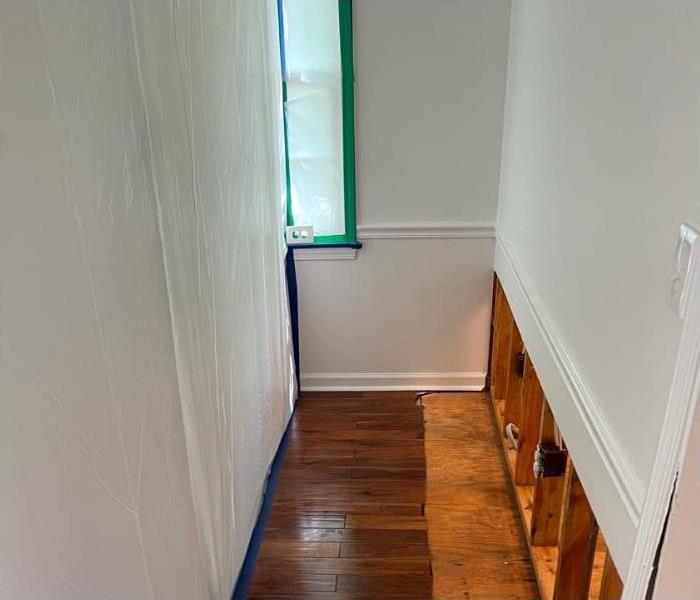Plastic Containment Walls: 2 Types of Jobs That Must Be Contained
6/28/2021 (Permalink)
During asbestos abatement and mold remediation, plastic containment walls should be installed.
Plastic containment walls (temporary barriers) are essential in the restoration and construction industry; they have proven to contain unwanted dust and contaminants from spreading to unaffected areas. Plastic containment walls also make it easier for restoration professionals to clean up a contaminated area by keeping all damages contained in a single area. This blog post discusses plastic containment walls, what they are, how they work, and why they need to be installed while removing mold and asbestos.
What are plastic containment walls?
Plastic containment walls are temporary barriers made of plastic sheets to enclose a work area. Plastic containment walls are designed to be installed quickly and easily taken down. Inside the plastic containment walls, the following also needs to be covered:
- Doorways
- Windows
- Electrical outlets
- Air vents
- Ducts
- Exhaust fans
- Skylights
- Light fixtures
When installing plastic containment walls, a restoration professional will ensure that the plastic sheeting is secure from floor to ceiling. Poles with painter's tape are commonly used to stabilize the containment barrier.
Using plastic containment walls during asbestos abatement
As we mentioned already, plastic containment walls stop unwanted dust and contaminants from spreading into unaffected areas. Asbestos abatement jobs always need to be contained.
For those unaware, asbestos was a popular building material used before it was proven to have harmful effects when disturbed. In properties built before 1980, asbestos can be found in flooring tiles, ceiling tiles, roofing, siding, and insulation. It is best for all older property owners to contact a certified and licensed asbestos abatement professional before starting a remodeling project. An asbestos abatement professional will come and send out a sample of the questionable building material for sampling before moving forward.
As you can see, asbestos is a serious substance. During any size asbestos abatement job, the professionals at SERVPRO will put on their personal protective equipment (PPE) and then install plastic containment walls to isolate the area with asbestos. The plastic containment walls will prevent asbestos from spreading beyond the contained space during the asbestos removal and demolition process.
Plastic containment walls are essential during mold remediation.
Just like asbestos abatement, mold remediation also needs to utilize the benefits of installing plastic containment walls. Mold spores are known to travel quickly as soon as the mold remediation process begins.
When the professionals at SERVPRO of East Dayton/ Beavercreek arrive at a mold job, they will be wearing their PPE ready to mitigate the unwanted mold issue. One of the first steps in the mold remediation process is installing plastic containment walls to isolate the contaminated area. After the plastic containment walls are up, a restoration professional will place a negative air pressure machine and dehumidifiers to remove excess moisture.
Final Thoughts
We hope you enjoyed learning about the purpose and benefits of installing plastic containment walls. Properly insulating all work areas is guaranteed to help avoid the spread of cross-contamination during any mold and asbestos job. As you can see, the IICRC certified professionals at SERVPRO take safety very seriously. We want to ensure that contaminants never spread to other areas of a property.
Poorly built plastic containment walls may result in further damages and expensive repairs. When you call SERVPRO of East Dayton/Beavercreek, we can assure you that our certified professionals will install plastic containment walls using quality materials to avoid further damages.
SERVPRO of East Dayton/Beavercreek is independently owned and operated by Greg and Gary Shooter. SERVPRO has built the reputation as the company to call when it comes to any size restoration project in Dayton, Ohio. Contact us today for more information or questions on plastic containment walls.



 24/7 Emergency Service
24/7 Emergency Service